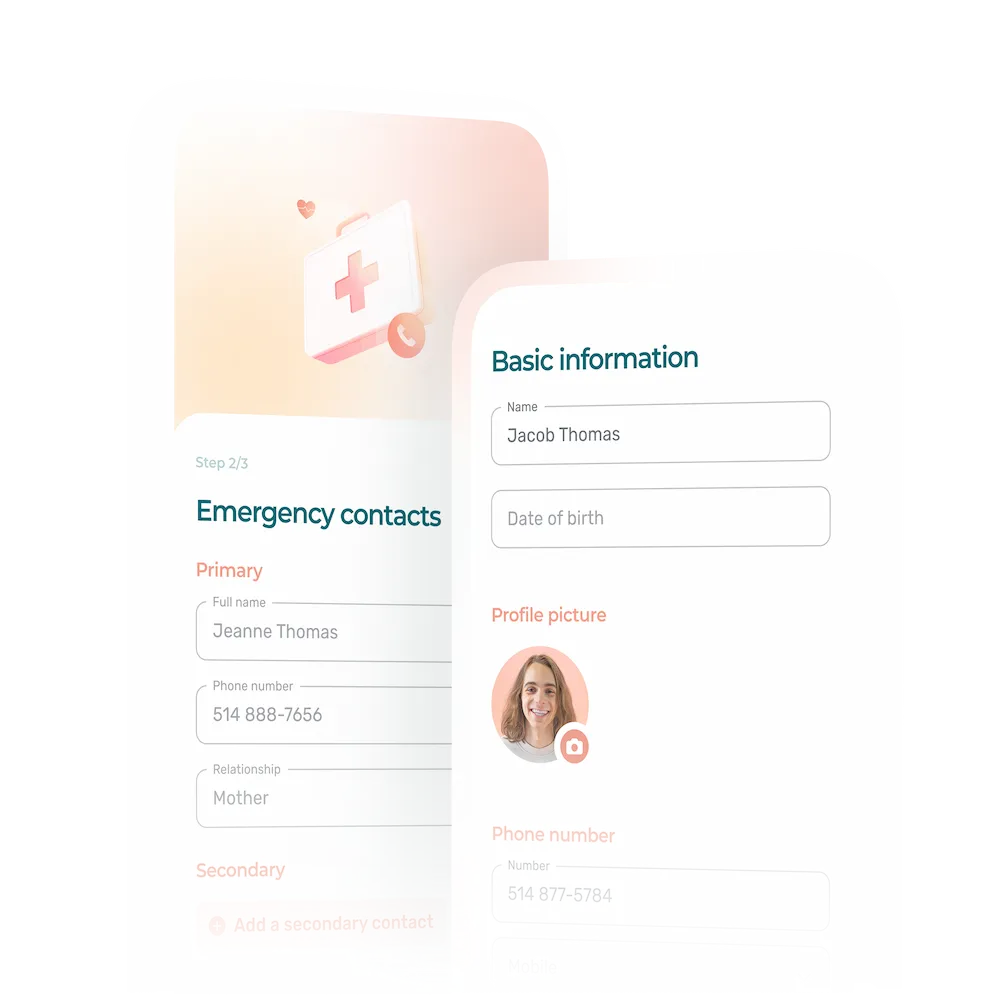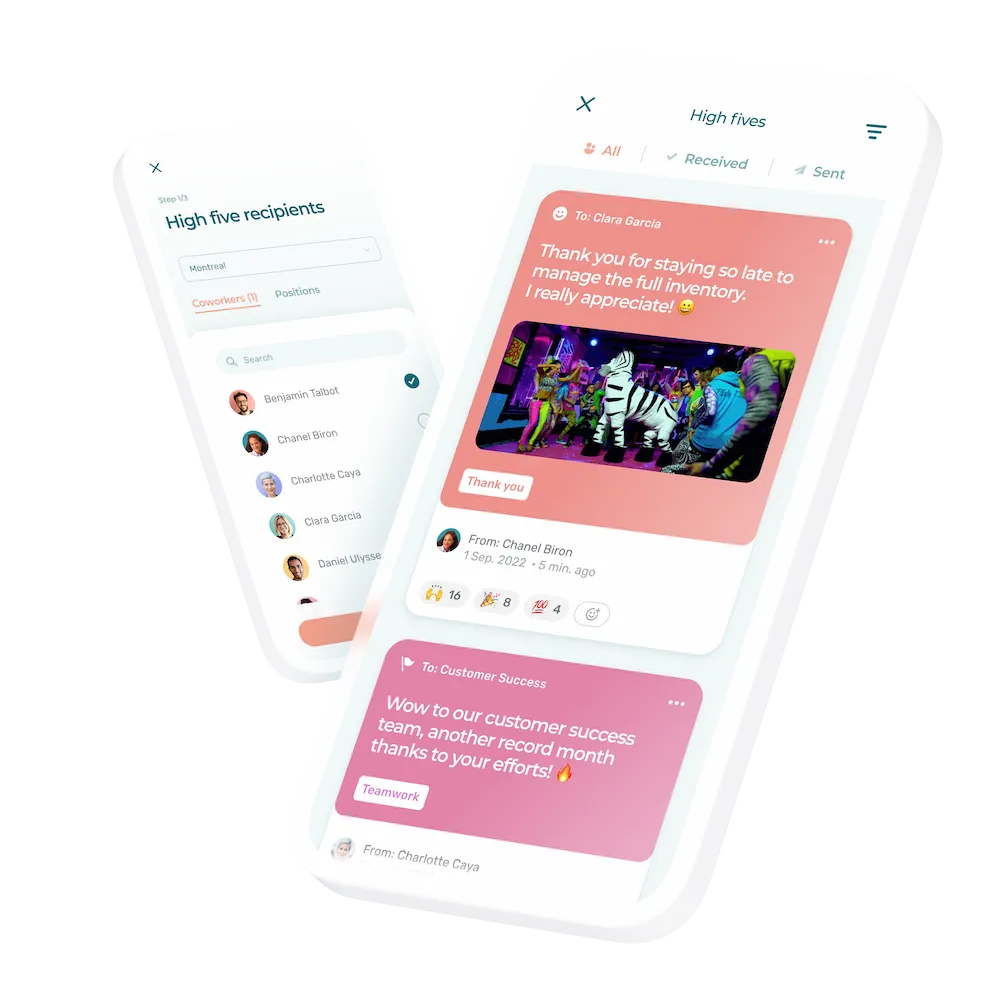Active listening ties in with the concept of emotional intelligence. It is a critical skill to develop to become a better manager.
There was a time when managers’ competence was appraised merely on the basis of their performance. Does this sound stereotypical to you? Well… it may be. Yet the fact remains that today, there’s no question that the more person-centred your management style and communication, the brighter your company’s future.
Did you know that active listening is the number one thing to master in order to become a skilled and effective communicator?
This article :
- Gives you 6 down-to-earth tips to practice active listening in your management and one-on-one sessions or performance evaluations with your employees;
- Some examples of specific situations and how to deal with them.
What Is Active Listening?
Active listening is defined as a structured way of listening and responding to another person.
When you’re actively listening, your attention shifts exclusively to the other person, enabling you to really understand, interpret and evaluate what they are telling you.
This is the opposite of playing one-sided “paddleball”—you know, just waiting for the ball to come back so you can hit it again. 😛 Everyone’s speaking but no one is listening, since they are more interested in what they’re going to say when it’s their turn.
6 Tips for Developing Active Listening
Communication is often said to be the key to success, but the foundation of successful communication is listening. Here are our top 6 tips for adding active listening to your toolkit of management techniques.
1. Put Yourself in Your Employee’s Shoes
Empathy means being able to put oneself in another person’s shoes so you can grasp how they’re feeling. This is central to active listening.
If the person you’re talking to feels that you are sensitive to them, they will be more comfortable opening up and being vulnerable, which is an inherent condition for authenticity.
💡 In practice : Imagine that, during a one-on-one, a server tells you that when you give them 8 tables during their lunch shift, they feel overwhelmed and stressed out.
Your kneejerk reaction is to think about how you were always able to handle 8 tables at the same time when you were a waiter. If you tell this to your employee, they will feel invalidated… and maybe even incompetent. They may also feel pressured to be as efficient as you were.
To adopt active listening, first consider that each individual has a different level of stress tolerance, and even a different way of working. It would probably be helpful to offer your employee the option to reduce their table count. Alternatively, you could suggest that they examine how they organize their work and see if there are things that could be improved.
⚡ Quick tip : Try not to connect what your employee is telling you with something similar that you may have experienced in the past.
When we listen and think about what we would have done in the same situation or how we would have reacted, our outlook is distorted.
This judgment is contrary to empathy, as it neglects the fact that each person is different and experiences things in their own unique way.
2. Decode Body Language
The words are the form; the silences and body language are the substance. Focusing on non-verbal communication gives us insight into what lies behind the facts, it lets us go beyond the words alone.
Non-verbal communication should be regarded as complementary information.
It helps us understand what the other person is going through or thinking—and makes it easier to reflect back to them what we understood.
💡 In practice : Imagine that in the middle of a busy Saturday at the pharmacy, you’re acutely aware of the high stress level of one of your employees. They are rushing about and talking faster and faster, their face is flushed, and they’ve lost their smile. You ask them if everything is okay, and they simply reply: “Busy Saturday, huh!” Their answer most likely isn’t reflecting the whole picture of how they are doing—their body language is speaking louder than their words. The information you decode in their body language is an opportunity to offer them help or to ask them if they need anything.
⚡ Quick tip : Don’t misunderstand the purpose of focusing on body language; the idea isn’t to overstep and start secretly analyzing your employee, for example. Generally speaking, no one likes to feel scrutinized or like people are jumping to conclusions based on their observations of them. (You can learn more about that here).
3. Listen to Understand, Not to Answer
You’ve probably had a conversation with someone who just seemed to be waiting for you to finish talking so they could jump in.
We can all agree that when this happens, it’s difficult or impossible to feel heard.
Active listening means developing the reflex to quiet your inner chatter and focus only on the person you are listening to. This doesn’t always come naturally, but it’s so important!
💡In practice : Imagine your employee telling you about a conflict they have with a co-worker. There are several times when you’re itching to interrupt to make links with something similar that you experienced. You also want to recommend that your employee do X or not do Y.
Rather than rushing in to offer your best advice, calm down the part of you that wants to feel useful and actively engaged. To really understand, just listen.
Then, only when the other person has finished speaking, and after validating their emotions and experiences, try to find out what need they are expressing by confiding in you about the situation. Do they need to:
- Get your opinion?
- Know what to do next?
- Find support?
- Just vent?
⚡ Conseil éclair : Critical distance is sometimes (often 😅) essential to good listening. Learn to be OK with leaving a pause after your interlocutor has finished speaking, rather than cutting in with an immediate answer that you’ve been focusing on.
4. Ask Open-Ended Questions
Asking open-ended questions deepens your understanding of your employee’s perspective and emotions. Open-ended questions are essential to active listening and will lead to much more enlightened actions and decisions.
👉 Remember that unlike a closed-ended question, an open-ended question cannot be answered with a simple yes or no.
In a fast-paced work environment, such as a restaurant or retail store, open-ended questions aren’t always convenient. However, they are still ideal during face-to-face meetings, such as one-on-ones, when there’s time to go more in depth.
💡 In practice : Say a team member seems more irritable than usual. You feel that they may not be at their best, but they haven’t told you anything.
You could just ask them if they’re okay, but then what will you do if they say, “I’m fine”? Be intrusive or suspicious by asking the question differently or asking if they are sure they are okay?
Instead, choose a question that leaves room for thought and elaboration:
“How are you feeling this week?”
⚡ Quick tip : Remember, the more room a person has in which to express themselves, the more constructive the conversation will be.
5. Rephrase
Rephrasing is summarizing and repeating in your own words what someone just told you. The purpose is not to try to get more details from the person you’re speaking to. Rather, this is an essential component of active listening—and it’s useful to you as well as the person you are listening to.
For you, reformulating helps make sure you have an accurate understanding of what was said.
For the other person, it lets them know that they’re genuinely being listened to.
Reformulating can also get the other person thinking. Sometimes, just hearing what they said being mirrored back to them can influence their outlook on a situation and can help them take a more introspective look at their own point of view.
💡 In practice : One of your managers storms into your office, sits down, and asks if they can speak to you. For 5 minutes, non-stop, they tell you how much a team member is bothering them, what he said to them, what he did last week, and how he’s bothering them again this morning. They go into great detail. 🫠
Beyond your manager’s story and feelings, you need to understand what is going on so you know what needs to be said or done. The value of reformulation in this example is obvious.
Summarizing what they told you in 1-2 minutes will help you determine what was important in what they said, and will perhaps help organize everything that came out in the jumble of emotion.
⚡ Quick tip : Before you rephrase, start by saying something such as, “If I understand correctly…” After reformulating, don’t hesitate to ask if you understood correctly. Important: Make sure not to add your perceptions when you’re reformulating.
6. Mind Your Boundaries
Active listening allows you to be a better presence for your colleagues or employees. As with any situation, however, the first step is always to make sure you’re comfortable with the conversation. This is why one of the 6 tips for practicing this key skill is to be attentive to your own personal boundaries.
Being in the role of listener means that you too will sometimes experience emotions. You may find old wounds or memories resurfacing.
If a conversation makes you feel uncomfortable, it’s okay to simply step back. You have a responsibility to the other person, but also to yourself. This is what will allow you to be truly available when you need to be.
💡 In practice : A colleague stops you in the staff room to tell you what they think of the work of one of the team members. You like this employee and you don’t want to take part in unconstructive chatter.
To avoid hurting their feelings or your relationship, the best thing to do is to set your boundaries by making it clear that you understand that they are experiencing emotions about your colleague, but that discussing them behind his back makes you uncomfortable.
⚡ Quick tip : Acknowledging your boundaries also means checking in with yourself. If a situation gets you worked up, it is an indication that you are crossing an important line. Don’t try to suppress this feeling.
Naming and respecting boundaries takes courage and means having to say no, or not meeting another person’s need when they want to.
To clearly express your boundary, but also to feel more comfortable doing so, explain yourself gently to the other person: express with words your fatigue, your discomfort, or the fact that a situation is delicate for you because of a previous personal experience or a work relationship. A boundary is always easier to respect when it is understood.
Active Listening: A Skill to Develop for More People-Centred Management
Mastering active listening is a step toward making your employees feel important, really getting to know them, and helping them by responding to their real needs. Knowing how to listen actively is sure to be a tremendous asset for you.
Many believe that standing out or succeeding as a manager only requires mastering more “active” skills—public speaking, rallying, inspiring, and so on.
But while listening may not be as flashy, it remains a critical management skill. Don’t overlook the impact you can have when you lend an employee an attentive ear.










